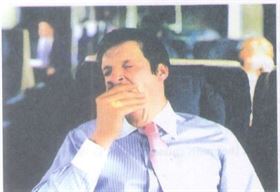fce non-defining relative clause
لغات مرتبط با توصیف افراد و گرامر عبارات ربطی کتاب اف سی ای

Language focus 2: Non-defining relative clauses
1 Look at the following sentence from the reading text.
Aunt Georgia, who lived down in London, came to help with the preparations for my sixteenth birthday party.
This sentence contains two separate ideas.
Main idea: Aunt Georgia came to help with the preparations for my sixteenth birthday party.
Second idea: Aunt Georgia lived down in London.
The information contained in the second idea is not essential to our understanding of the meaning of the main idea. A relative clause which contains non-essential information is called a non-defining relative clause.
2 Underline the correct alternative in the following rules for non-defining relative clauses.
a Who or which can/cannot be replaced by that.
b The relative pronoun can/cannot be omitted.
c Commas are/are not used
Check your answers and read more about non-defining relative clauses on page 214 of the Grammar reference.
3 For 1-5, link the ideas contained in the two sentences to form one sentence. Use an appropriate relative pronoun (who, which, whose) or relative adverb (when, where) and make any other necessary changes. Don't forget to add commas.
Example:
Main idea: This photograph shows the royal family on the palace balcony.
Second idea: This photograph was taken in 1919.
This photograph, which was taken in 1919, shows the royal family on the palace balcony.
1 Main idea: We spent the weekend in York.
Second idea: My mother was born in York.
2 Main idea: My best friend has just got married.
Second idea: My best friend always said she wanted to stay single.
3 Main idea: My oldest sister lives in Munich.
Second idea: My oldest sister's husband is German.
4 Main idea: The best time to visit Iceland is in summer.
Second idea: The average temperature in Iceland in summer is around ten degrees.
5 Main idea: He has to work on Saturdays.
Second idea: He isn't very happy about the fact that he has to work on Saturdays.
Open cloze: Relative clauses

For questions 1-10 read the text below. Complete each of the gaps with either a relative pronoun (who, which, that, whose) or a relative adverb (when, where). If there is more than one possibility, or the word can be left out, you should also indicate this. There is an example at the beginning (0).
Family members' yawns are most contagious
A phenomenon (0) which/that has long perplexed scientists is 'yawn contagion', the impulse (1) we feel to yawn when we see other people doing so. Although some suggested the behaviour was a form of social empathy (2) helps people connect with one another, it was unclear what determines whether we 'catch' a yawn or not. Now a new study has shown that the biggest factor in whether or not a yawn is contagious is the relationship between the yawner and the person (3) hears or sees it. Prof Elisabetta Palagi, (4) co-authored the study, said: 'We found that the most important factor is not nationality, the colour of skin, different cultural habits, sex or age of the people involved, but the type of relationship (5) linked the two people.'
The study was carried out in Europe, North America, Asia and Africa, (6) researchers from the University of Pisa in Italy analysed 480 bouts of yawning among 109 adults over a 12-month period. They found that the people (7) yawns we are most likely to catch are close family members, followed by friends, then acquaintances and lastly strangers. The results also showed that the delay in (8) a yawn is passed on is longer between strangers than between people (9) know each other well. Children do not develop contagious yawning until the age of four or five, (10) they also develop the ability to interpret other people's emotions properly.
Vocabulary 2: Describing people
A Personality
1 The following adjectives can all be used to describe a person's character. Which of them are positive and which are negative? Make two groups in your notebook.
sociable sincere practical mean selfish mature tolerant
decisive bad-tempered patient lazy adventurous sensitive
reliable moody polite cheerful sensible
2 Arrange the adjectives in exercise I into the columns below according to the prefix which is used to form the negative. If none of the prefixes is used for a particular word, write a new word which expresses the opposite idea.
not completed
3 Think of two people you know, for example a relative and a friend, and describe what these people are like, using the adjectives you have just studied to help you.
B Appearance

1 One adjective in each group is not normally used before the noun in capital letters.
Underline the adjective which does not fit.
1 flowing scruffy bald shoulder-length straight spiky
2 dark hazel sparkling almond-shaped piercing pierced
3 wrinkled freckled thinning round tanned expressive
4 smooth pale dark healthy well-built spotty
HAIR EYES FACE COMPLEXION
Which of these features can you see in the photographs above?
2 What is the difference between the words in each of the following groups?
a fat plump overweight b thin slim skinny
3 Work in pairs. Take it in turns to compare two people in the photographs above and say which of the two people you would prefer to meet and why. As well as describing physical appearance
and clothes, you should also talk about personality.


